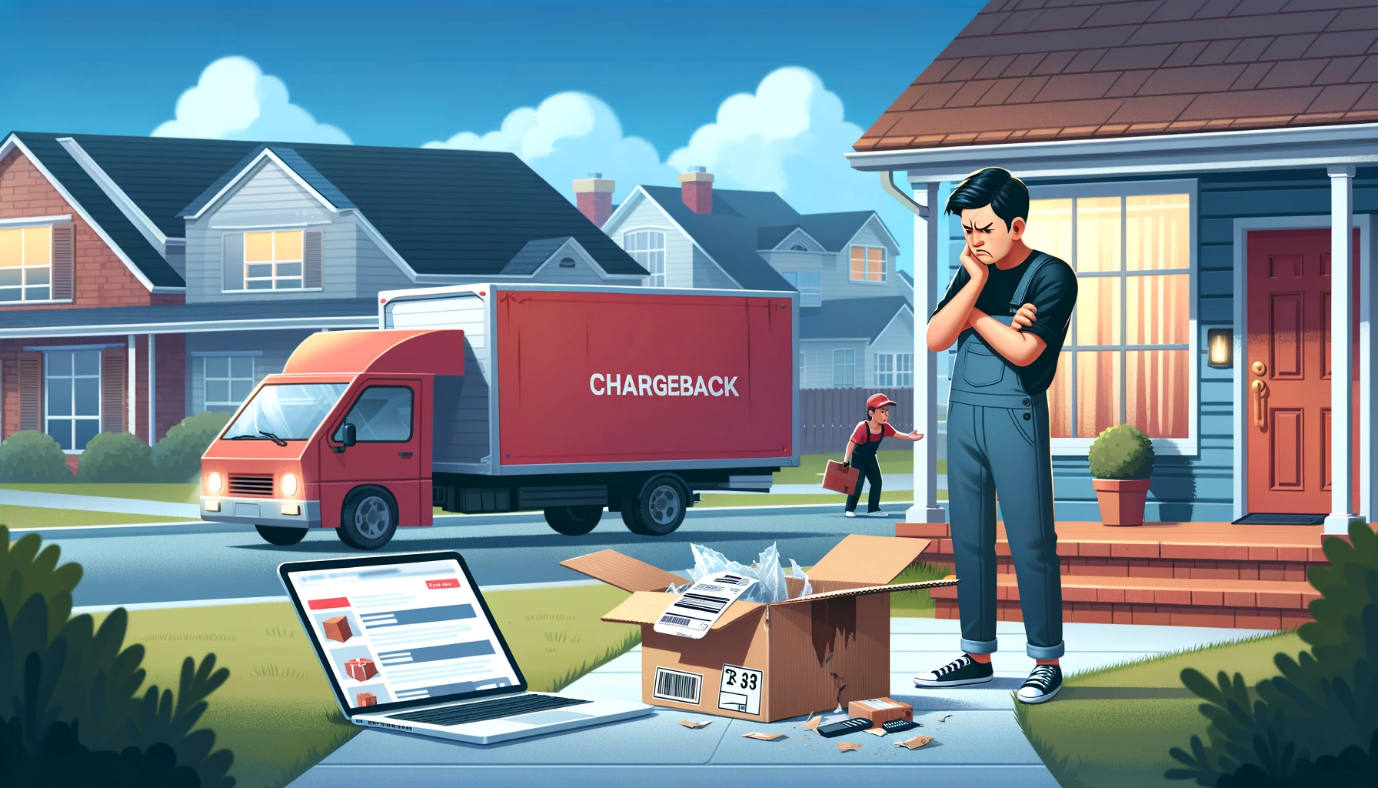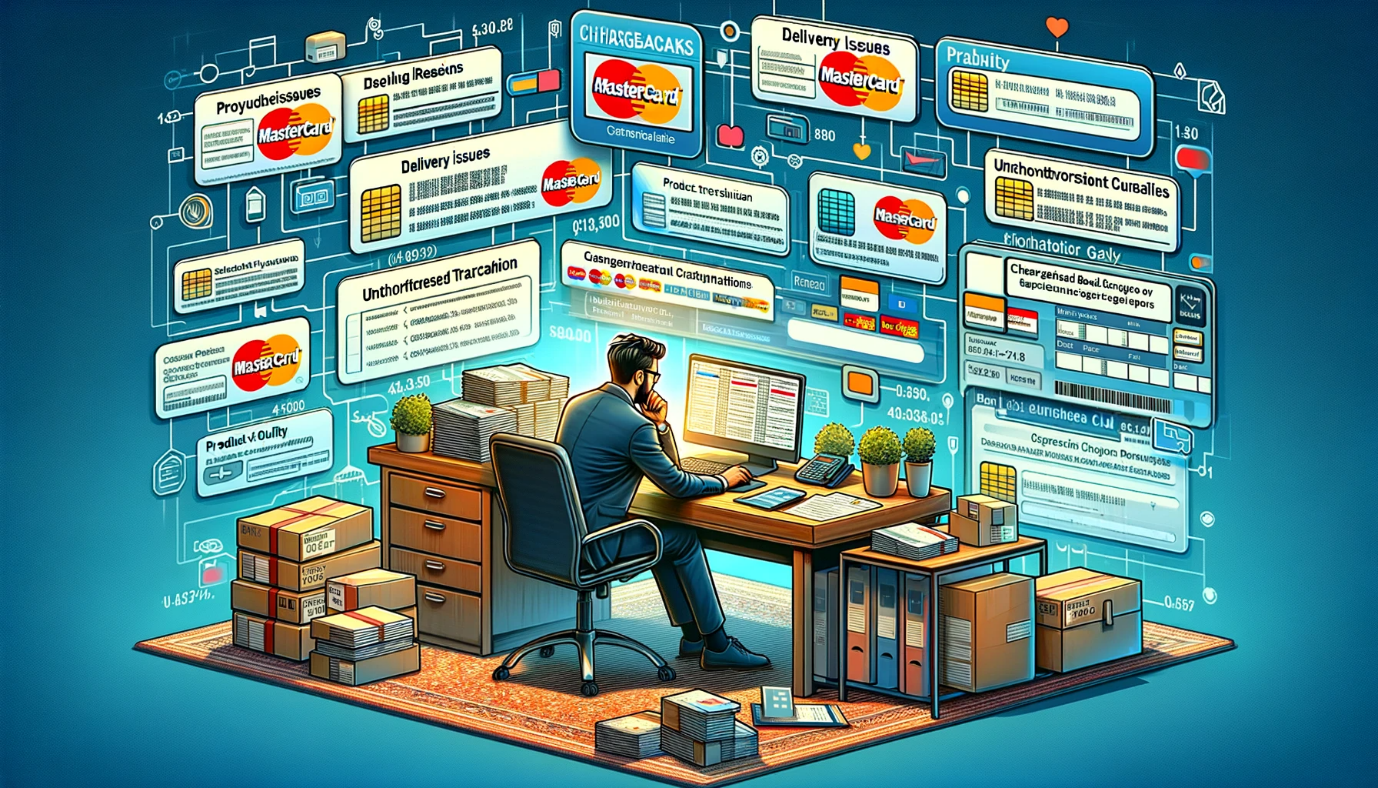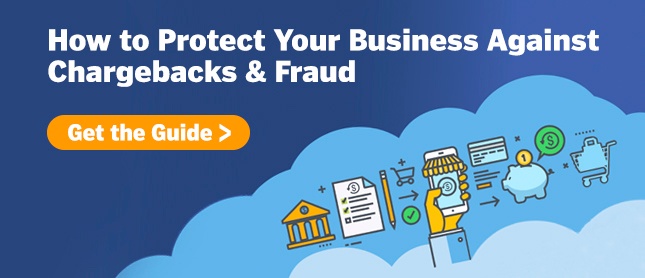
E-commerce delivery - How a Disappointing Experience Can lead to a Chargeback
By Alex Novak on Dec 21, 2023 3:51:15 PM
The journey from clicking “buy now” to the expected moment of delivery in the e-commerce business world is very vital. While delays might happen unexpectedly at times, it is necessary to take appropriate measures in time to avoid such occurrences.
According to a market research survey of shipping and returns, manufacturers, retailers, and third party logistics providers (3PLs) have been challenged by demanding e-commerce consumers who expect a speedy and convenient delivery of orders to their homes.
More extracts from the survey revealed that over 70% experience a delayed online order. As a result, 90% of the respondents revealed they are less likely to purchase anything from the brand again due to the bad experience. While 29% were willing to give a negative review online to the brand.
Irrespective of the mishaps that happens along the way, once the delivery experience falls short of expectation, it prompts a serious consequence: chargebacks. In order to avoid all these, read on as we explain all you need to know about e-commerce delivery and chargebacks, and how to avoid it.

What is E-Commerce Delivery?
E-commerce delivery simply refers to the transportation of ordered goods purchased online from the seller directly to meet the buyer. This transportation involves some key steps which includes:
- Order Processing: This is the first step whereby the buyer orders for an item online. The seller then prepares the item for shipment by picking it from the store, packaging it, and labeling for delivery.
- Shipping: The packaged item is given to a delivery service which could either be a courier service, e-commerce delivery service, or postal service. The shipping time or delivery method which could be standard or express depends on the efficiency of the delivery service.
- Tracking and Updates: Tracking numbers are given to the customers to monitor the progress of their ordered item online. Updates on the delivery time are also made available.
- Delivery: This is the final step and it could be a delivery to a designated pick-up point or doorstep delivery.
- Returns and Exchanges: E-commerce delivery also involves returns and exchanges in which the buyer returns the item to the seller.

What is a Chargeback?
Chargeback also known as disputed payments or disputes often occurs when a customer dissatisfied with a product or service disputes a charge on their credit cards, leading to the reversal of the transaction. This could be as a result of either fraudulent card payment, or the services wasn’t provided as expected, or the expected merchandise was never received.
However, once the consumer initiates a chargeback, the money doesn’t immediately return. There’s a back and forth process between the issuer and the acquirer whereby until either one of them accept liability for the charge, the card scheme resolves the dispute, or the dispute resolution elapses, then will the chargeback occur.
This process, however, has a negative impact on the merchant business thereby causing loss in revenue and potential of facing additional fees. In this context, chargeback management and intelligent chargeback prevention becomes indispensable.
How Can E-commerce Chargebacks Be Reduced?
According to the old quote which says “Everything happens for a reason,” the same also applies to chargeback. If you are looking to prevent chargebacks, then follow the following strategies:
1. Communicate Clearly with Customers:
Establishing a clear communication with customers is vital in maintaining a seamless and error-free business, and preventing cases of chargebacks. What this entails is that a means of communication needs to be readily available which includes a call center, customer support via live chat, or a knowledge base. With this in place, the customers would have rest of mind about their item shipment and product warranty.
2. Follow all Required Payment Rules:
By abiding by all credit card processing rules including payment card industry (PCI) compliance standards, you make yourself free from any sort of fraud or chargebacks that could occur on your platform.
3. Ensuring Timely and Accurate Ship Orders:
Customers would get dissatisfied if they don’t get exactly what they ordered for, or it’s not delivered to them in time as speculated. Keeping to the exact shipping order time without compromising the quality boosts clients’ retention and enthusiasm to purchase more products from your brand or platform.
4. Employing Robust E-Commerce Chargeback Tools:
By ensuring the availability of E-commerce chargeback tools and Integrated chargeback solutions, you can significantly mitigate the risks of chargeback.
In addition, chargeback reason codes Visa, MasterCard and other payment providers offer can help in recognizing the reasons behind chargeback, enabling merchants to effectively address specific issues.

Why are Chargeback Reason Codes Important?
If you own an e-commerce delivery platform, chargeback reason codes are very crucial as they help you in identifying why a chargeback has occurred. So here is how it goes, after categorizing each credit card dispute you receive, the reason codes come next into play by helping you realize the main root cause of a chargeback.
Chargeback reason codes aids you in deciding whether or not to dispute a chargeback. If you’ll be going ahead with contesting for a dispute, one of the perk with the chargeback reason code is that it can give an idea to the kind of evidence needed in making your case.
An example to this is suppose a chargeback arrives with a reason code that the customer never received the item they ordered for, there’s no need to panic as all you need is a shipment tracking information which shows evidence that you shipped the item. If it’s a case of misrepresentation reported by the customer, all you need to do is providing a picture of the packaged good prior to delivery as proof that it was packaged and sent for delivery.
By leveraging on chargeback reason codes, you are helping your business to be free from any sort of fraud or future chargebacks.
Visa Reason Codes, and MasterCard Reason Codes are two of the most common chargeback
reason codes used. Here’s a breakdown of the codes including Discover and American Express.
Chargeback Reason Codes MasterCard, Visa, Discover and American Express: Fraud
| Code | Visa Fraud Reason Codes |
| 57 | Fraudulent Multiple Transactions |
| 62 | Counterfeit Transaction |
| 81 | Fraud – Card-present Environment |
| 83 | Fraud – Card-Absent Environment |
| 93 | Visa Fraud Monitoring Program |
| 10.1 | EMV Liability Shift Counterfeit Fraud |
| 10.2 | EMV Liability Shift Non-Counterfeit Fraud |
| 10.3 | Other Fraud: Card-Present Environment/Condition |
| 10.4 | Other Fraud: Card-Absent Environment |
| 10.5 | Visa Fraud Monitoring Program |
| Code | Mastercard Fraud Reason Codes |
| 4837 | No Cardholder Authorization |
| 4840 | Fraudulent Processing of Transactions |
| 4849 | Questionable Merchant Activity |
| 4863 | Cardholder Does Not Recognize – Potential Fraud |
| 4870 | Chip Liability Shift |
| 4871 | Chip/PIN Liability Shift |
| Code | American Express Fraud Reason Codes |
| F10 | Missing Imprint |
| F24 | No Cardmember Authorization |
| F29 | Card Not Present |
| F30 | EMV Counterfeit |
| F31 | EMV Lost/Stolen/Non-Received |
| Code | Discover Fraud Reason Codes |
| UA01 | Fraud: Card Present Transaction |
| UA02 | Fraud: Card Not Present Transaction |
| UA05 | Fraud: Chip Card Counterfeit Transaction |
| UA06 | Fraud: Chip and PIN Transaction |
Chargeback Reason Codes MasterCard, Visa, Discover and American Express: Authorization
| Code | Visa Authorization Reason Codes |
| 70 | Card Recovery Bulletin or Exception File |
| 71 | Declined Authorization |
| 72 | No Authorization |
| 73 | Expired Card |
| 74 | Service Code Violation |
| 11.1 | Card Recovery Bulletin |
| 11.2 | Declined Authorization |
| 11.3 | No Authorization |
| Code | Mastercard Authorization Reason Codes |
| 4807 | Warning Bulletin File |
| 4808 | Authorization-Related Chargeback |
| 4812 | Account Number Not on File |
| Code | American Express Authorization Reason Codes |
| A01 | Charge Amount Exceeds Authorization Amount |
| A02 | No Valid Authorization |
| A08 | Authorization Approval Expired |
| Code | Discover Authorization Reason Codes |
| DA | Declined Authorization |
| AT | Authorization Non-compliance |
| EX | Expired Card |
| NA | No Authorization |
Chargeback Reason Codes MasterCard, Visa, Discover and American Express: Point of Interaction Error and Processing Error
| Code | Visa Point of Interaction Error Reason Codes |
| 74 | Late Presentment |
| 76 | Incorrect Currency or Transaction Code |
| 77 | Non-Matching Account Number |
| 78 | Incorrect Transaction Amount or Account Number |
| 82 | Duplicate Processing |
| 86 | Paid by Other Means |
| Code | Mastercard Point of Interaction Error Reason Codes |
| 4834 | Point-of-interaction error |
| 4831 | Transaction Amount Differs |
| 4842 | Late Presentment |
| 4846 | Correct Transaction Currency Code Not Provided |
| 4850 | Installment Billing Dispute |
| 4999 | Domestic Chargeback Dispute (Europe Only) |
| Code | American Express Processing Error Reason Codes |
| P01 | Unassigned Card Number |
| P03 | Credit Processed as Charge |
| P04 | Charge Processed As Credit |
| P05 | Incorrect Charge Amount |
| P07 | Late Submission |
| P08 | Duplicate Charge |
| P22 | Non-Matching Card Number |
| P23 | Currency Discrepancy |
| Code | Discover Processing Error Reason Codes |
| LP | Late Presentment |
Leveraging Technology for Effective Chargeback Management
Advancements in chargeback management software and dispute resolution platforms have made it easier for merchants to handle chargebacks proactively. Intelligent chargeback management software, combined with fraud prevention software, can help detect and prevent illegitimate chargebacks, saving businesses time and money.
Chargeback analytics play a crucial role in understanding patterns and trends, helping merchants fine-tune their strategies.
Chargeback protection companies like MidMetrics solutions offer specialized services to protect merchants from unjustified chargebacks. These services, including chargeback rapid dispute resolution and payment dispute management, are crucial for businesses operating in the high-risk e-commerce landscape.
By leveraging our services, you can focus on your other core business activities, assured that
your chargeback concerns are being professionally managed.
Wrapping Up
A quote from Jeff Bezos says, "We see our customers as invited guests to a party, and we are the hosts. It's our job every day to make every important aspect of the customer experience a little bit better."
A proactive approach, with combining the right strategies and technology, can reform chargeback management from a challenge into an opportunity for enhanced customer satisfaction and business growth.



